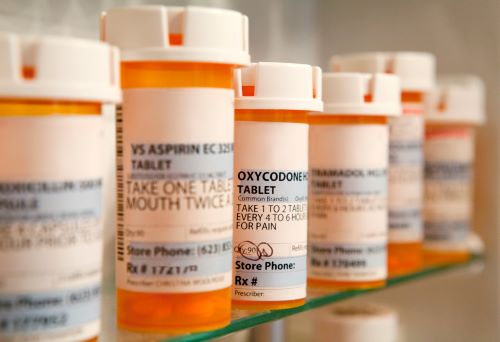
Jefferson County, Alabama reported nearly 500 overdose deaths in 2023. More than 400 of these were due to opioids, a class of prescription medication used for their pain relief properties. Opioids attach to receptors on nerve cells to block pain messages being sent from the body to the brain. This effect provides relief to patients after surgery or injury, but when used improperly or taken for too long, can become highly addictive.
Karen Scott, Ph.D., F-ABFT, directs the Forensic Toxicology Laboratory in the UAB Department of Pathology. Scott, an associate professor in the department, works on behalf of UAB Hospital and the Jefferson County Coroner/Medical Examiner Office. According to the National Institute of Justice, forensic toxicology is the analysis of biological samples for the presence of toxins, including drugs. The toxicology report provides key information as to the type of substances present in an individual and if the amount of those substances contributed to their death.
“We receive samples from the medical examiner’s office twice per week,” Scott said. “Then we perform a series of drug panels on them to see what toxins, if any, are present. We’re Dr. Karen Scott actively involved in homicide investigations; our reports help to move cases through the system after confirmation testing is complete.”
Dr. Karen Scott actively involved in homicide investigations; our reports help to move cases through the system after confirmation testing is complete.”
Scott’s lab includes Andrea Shipley, lab staff, and Jennifer Whiddon, lab manager. This small team can receive as many as 40 cases per week, with an average of 1300 cases per year.
“Ten years ago, the opiate of choice was heroin. Now, fentanyl has overtaken heroin usage by a landslide. It’s more accessible, and unfortunately, more toxic. We have seen an exponential increase in deaths by fentanyl compared to what we saw with heroin. In fact, we found fentanyl present in 40% of the cases we examined last year,” Scott said. “Drugs cycle. There’s an ebb and flow of drugs becoming popular and then dissipating, and it is so difficult to predict. It’s challenging for labs to develop new testing methods for specific drugs that appear and disappear more quickly than others. This is what our most recent publication is about; how to produce a quality standard of analysis over the course of this ever-changing landscape.”
“Death investigation has always depended on forensic toxicology, now more than ever,” said Gregory Davis, M.D., M.S.P.H., Division Director, Forensic Pathology. “Dr. Scott’s lab identifies and quantifies drugs in a timely manner, allowing us to certify deaths properly in a matter of a few weeks. Other offices in the nation wait months for such results. We are grateful to Jefferson County and the UAB Department of Pathology for supporting this invaluable service and to the lab staff for their hard work.”

“Our lab is small but mighty,” Scott said. “It’s time we make some noise and show the world what we’re accomplishing together!”
“Dr. Scott has brought significant enthusiasm and energy to the Forensic Toxicology Lab, making great strides in our understanding of toxicological deaths in Jefferson County and Alabama,” said Sixto Leal, M.D., Ph.D., Division Director, Laboratory Medicine. “Her clinical, education and research efforts continue to advance local, national, and international efforts to mitigate the impact of opiates and other novel illicit drugs on the health of our communities.”